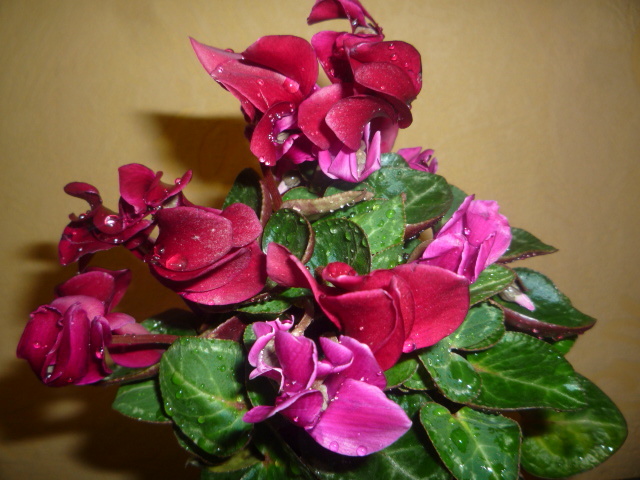Money tree transplant - what is it for
The fat woman is a capricious plant that requires special conditions of detention, the violation of which can lead to its death. Most often, Crassula transplant is required:
- If the plant has grown a lot and the pot has become small for it. At the same time, the roots suffer, which adversely affects the development of the fat woman.
- If the leaves turn yellow, the flower takes on an unhealthy appearance, which signals root rot. In this situation, an emergency transplant is required.
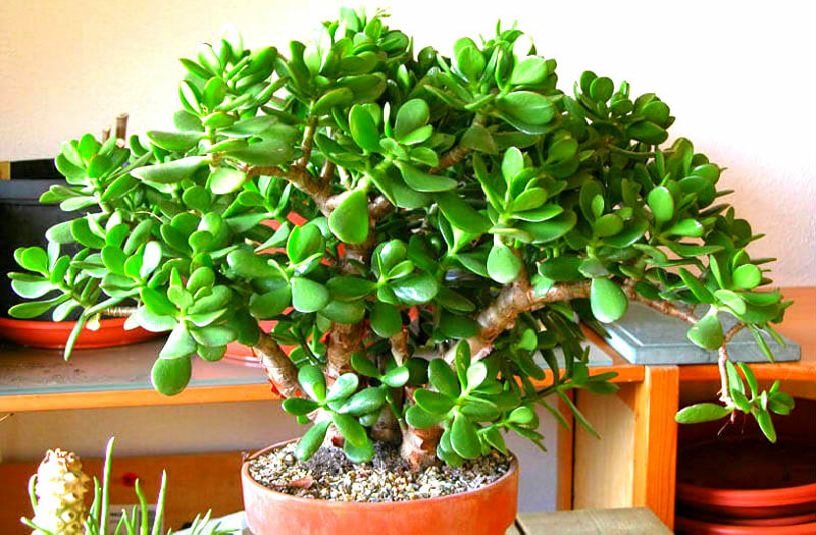
The money tree is often grown indoors.
Note! It is impossible to immediately plant a money tree in a wide and spacious pot. The root system will begin active growth, which will negatively affect the general condition of the ground part of the plant
When is it best to do it, on what days, is it possible in spring and winter
The first transplant should be done immediately after purchasing the plant. The fat woman at the time of sale is in a transport container. She will not be able to grow in it. Two weeks after purchase, it is transplanted into a more suitable pot. The flower is preliminarily given at least 14 days for adaptation.

Transplanting a money tree is an important element of agricultural technology
The best time to transplant is spring. During this period, active growth of shoots begins.
It is important not to allow direct sunlight to hit the flower. In autumn and winter, he is at rest.
A transplant is only possible if you have symptoms:
- the plant has stopped growing;
- leaves fall;
- looks weakened.
In such situations, an emergency transplant is necessary, without waiting for spring. Most often, problems arise due to waterlogging, damage to the root system by pests.

The optimal time for transplanting is spring
How often can a flower transplant be done?
Experienced growers recommend replanting young plants in new soil at least once a year. As you grow, the number of procedures decreases. A three-year-old flower is transplanted every 2 years. The procedure brings stress to the plant, which entails the need for recovery and adaptation to a new place of growth.
Note! Frequent transplants are contraindicated due to the fragility of the foliage. It can be easily damaged during processing
Possible difficulties and typical mistakes
With the sequential implementation of all the above steps, planting a flower in a pot at home is not difficult. To avoid problems, it is necessary to familiarize yourself in advance with the plant's requirements for the composition of the soil, its moisture content and density. Nevertheless, errors are possible, and the most common are the following:
- the wrong choice of soil or mistakes in its composition during self-production - it is necessary not only to carefully observe the recipe, but also to use high-quality ingredients;
- the wrong size of the pot - in too small the roots are cramped and it will experience a lack of nutrition, in too large the soil quickly oxidizes, which causes rotting of the root system. In addition, the plant, spending all its strength on building up the root system, does not bloom;
- the wrong time for planting or replanting - during winter dormancy or when the plant is about to bloom. "Double" stress can become a depressing factor for a flower for a long time;
- leaving a large amount of soil when transplanting a freshly acquired plant - usually when selling in a store, a "transport" peat mixture poor in nutrients is used.It is advisable to completely remove it from the roots, if necessary, even rinsing them with lukewarm water;
- application of fertilizers immediately after planting - fresh nutrient soil already contains a sufficient amount of substances useful for the flower. Therefore, no fertilizer needs to be added in the first 2-4 weeks.
Planting, carried out taking into account the requirements of a particular culture for the quality composition of the soil, makes it possible for the plant to grow and develop quickly, to please the owners with its appearance. If you plant indoor flowers in a pot correctly, following the conditions listed above, the planting or transplanting procedure will not be difficult for the grower and will not become severe stress for the plant itself.
How to care for the money tree
The money tree is a plant of the Fat family. Its leaves are like coins.
Taking care of the money tree is easy. The main thing for him is moderate watering, periodic feeding and crown formation.

Prune mature plants for a decorative look. There are several options:
- For a thick-stemmed plant, remove all shoots and lower leaves.
- For a classic tree, trim off excess side branches.
- For a lush shrub, remove the side leaves, but do not remove the shoots.
The trunk is always cut over the fourth pair of leaves.
Care rules:
- The fat woman does not like abundant watering. In summer, water the plant once a week, in winter once every 2 weeks.
- The flower does not require regular spraying. It is enough to wipe the leaves with a damp sponge.
- In the summer, feed the plant once every 2 weeks, at other times of the year once a month. Liquid fertilizers are suitable for cacti or succulents.
Choosing a pot / planter
In flower shops today there is a huge variety of pots and planters. What is the difference between a pot and a pots? The flowerpot has one or more drainage holes on the bottom, which are designed to drain excess water when watering the plant.
The planter does not have holes at the bottom and is used not for planting flowers, but for decorating the interior. It can be completely carved, woven from a vine, carved from stone, made from wood, metal, plastic, glass, etc.
Also, a pots of a certain shape can be hung on the wall, and if there are special holes / hooks / ears, they can be hung with a cord from the ceiling (window, terrace beam, etc.) and a pot with a flowering ampelous plant can be placed in it.
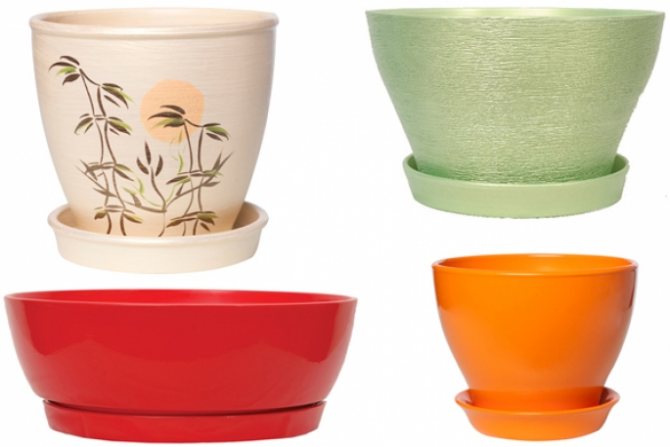
The assortment of flower pots is no less wide and numerous. It includes products from:
- Clays. The finished product can be fired, painted, glazed or without any decoration on the outer surface. Clay pots are usually made in standard shapes and proportions, with a height to diameter ratio of 3: 1. A simple clay pot is the most environmentally friendly, has a porous structure and allows air to flow well to the root system. Of the minuses, one can note the very rapid drying of the earthen coma in hot conditions, as well as the rapid loss of the appearance of the clay pot (the appearance of streaks and stains, the absorption and deposition of salts).
- Ceramics. The main advantage of ceramic pots is beauty and grace. Despite the fact that they are made of natural natural material, the glazed coating inside and outside does not allow the roots of the flower to breathe, and the walls - to evaporate excess moisture during watering. In addition, the glaze releases components harmful to the growth of flowers into the soil, and the pots themselves are quite expensive, heavy and fragile to use.
- Plastics. Plastic products are easy to use and care for. Plastic walls do not allow air to reach the roots, but this disadvantage is more than compensated for by the presence of numerous drainage holes. An earthen lump braided with roots is easily removed from a plastic container for transplanting a plant, for this it is enough just to wrinkle the walls of the pot with your hands.The palette of colors from standard black to bright and multi-colored can decorate any window sill with flowers.
- Glass / plexiglass. Glass and transparent plexiglass pots are used by indoor growers mainly for growing orchids. They let in the sunlight necessary for the orchid roots, and also allow you to visually monitor the condition of the substrate and the root system of the flower. The pots are environmentally friendly, relatively durable, do not react to fertilizers. The downside can be the lack of drainage holes, the need for exclusively top watering and the likelihood of flooding the plant, if you do not remove excess water from the substrate.
- Metal. Metal pots heat up quickly and cool down just as quickly, which can lead to overheating or hypothermia of the root system. It is better to use them as an original planter for a high-tech interior.
- Wood. Wooden pots are environmentally friendly and aesthetic, they can be of any shape - from polygonal to spherical. It is best to use large floor pots made of wood for planting large decorative leafy plants.
- Stone. In a pot made of natural stone, the plant will be uncomfortable - the stone will either overheat or too cool the roots of the flower. The stone can be used as a decorative element (stands / vases / pots) or in the form of large flowerpots for planting large-sized plants.
- Pressed peat. Peat pots are indispensable for planting seeds of plants with a fragile and vulnerable root system. A young sprout can be planted in another container without removing it from the peat pot. This minimizes the risk of damaging fragile roots.
When is it better to transplant
When is it better to transplant indoor flowers - a similar question is often of interest to flower growers. The optimal time for such a procedure is the end of February or the beginning of March. During this period, the plant wakes up after wintering, all vital processes resume in it, and active sap flow begins. Transplant it in early spring necessary if you do not want to create stressful conditions for him. At this time, the flower will endure the procedure without the slightest difficulty. In addition, transplanting a flower from a pot to a pot in the spring means stimulating the plant to active growth and development.
Set of tools
Any operations carried out for the care of plants, be it watering, planting, transplanting or fertilizing, are carried out using the appropriate equipment. Consider what exactly a florist needs to grow green pets.
- Watering can. When buying this device, it is recommended to select options with an elongated spout. Using such watering can options, watering is much more convenient and easier. At the same time, water will be able to break through even through the dense leaves of an indoor flower. With the right watering can, watering the plant will be complete and safe.
- Flask. Everyone knows what this device looks like. The elongated tip of the elongated structure and the spherical water container make the flask an indispensable item for automatic watering of indoor flowers during the departure of the owners. It is enough to pour clean water into the container and stick it into the ground with the tip down. The soil will be saturated with the necessary moisture gradually, as it dries.
- Sprayer. The spray can be used if you do not care for all types of indoor plants. Some varieties do not need wetting of the leaf plates. But it must be borne in mind that with the onset of too hot days, the foliage can still dry out, which will negatively affect the appearance of the plantings, so the spray can be a very useful device.
- A tray of water. Most often, this detail is used if the houseplant grows in a room with very dry air. You should not put the flower pot directly into the water. It is advisable to add expanded clay or pebbles.These components will gradually absorb excess moisture, transferring it to the rhizomes. The described method of caring for flowers is especially in demand and useful if they are located in close proximity to heating devices. With the advent of winter seasons, they will need regular feeding with life-giving moisture, which the florist should not forget.
Diseases
Let's take a closer look at this aspect. How to care for succulents at home? What problems can arise when growing? Novice growers are often faced with root rot. This disease can destroy the entire plant. In order to prevent the formation of rot, it is recommended to observe the watering regime. Also, when transplanting into the soil for a plant, it is imperative to add charcoal.
Often, the fungus Botrytis forms on succulents. A clear sign is the appearance of brown spots on the leaves and shoots. In this case, to get rid of the problem, it is necessary to cut off the affected leaves. It is also recommended to leave the soil dry for a couple of days and reduce watering. After that, the plant should be treated with a fungicide solution.
The defeat of the ervinium bacterium cannot be confused with anything. In addition to brown spots on the leaves, it also causes an unpleasant odor. In order to cure the plant, you will have to completely cut off the affected parts. It is also recommended to reduce watering and treat the flower with a potassium permanganate solution. For the prevention of succulents, it is recommended to periodically check for brown spots and rot.
A greenish or reddish bloom may indicate the appearance of a fungus of penigillosis on the plant. To combat it, it is recommended to treat the affected parts of the plant with an alkaline solution or potassium permanganate.
If the plant died without any external signs of disease, then the reason most likely lies in the infection of the root system by nematosis pests. If, at the same time, the culture has healthy leaves, then you can try to multiply them. The dead flower should be thrown out along with the ground. The pot should then be thoroughly disinfected. The next time you plant a succulent, be sure to add charcoal to the soil.
You also need to pay attention to the watering regime.
Sometimes burns can be seen on a newly acquired flower. They appear due to non-compliance with growing conditions. Most likely, the flower in the store stood in the open sun or, after hibernation, was immediately exposed to the window. In this case, it is necessary to limit the effect of sunlight on the plant and gradually accustom it to it.
What flowers are transplanted in the fall: read now all the tips in one article
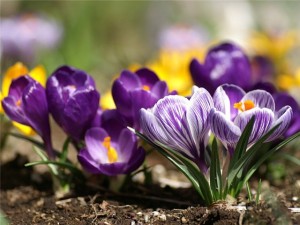
Autumn is the time to start preparing your favorite plants for the cold season. If you do not know if it is possible to transplant flowers, home or summer cottages, in the fall, this article is for you! Read helpful tips and tell your friends about them so that everyone is aware of the main rules of gardening.
What flowers are planted in the fall: some useful tips for flower growers
It is best to plant perennial plants in the fall so that they bloom in the spring and decorate your windowsill or flower bed. Speaking specifically about indoor plants, growing a plant from a seed is much more interesting than buying an adult flower in a flower shop. What's more, it helps your plant adapt more quickly to your home conditions and grow better. Indoor plants from the tropics are planted only in autumn, because in natural conditions they germinate immediately, and do not wait for a long cold season.
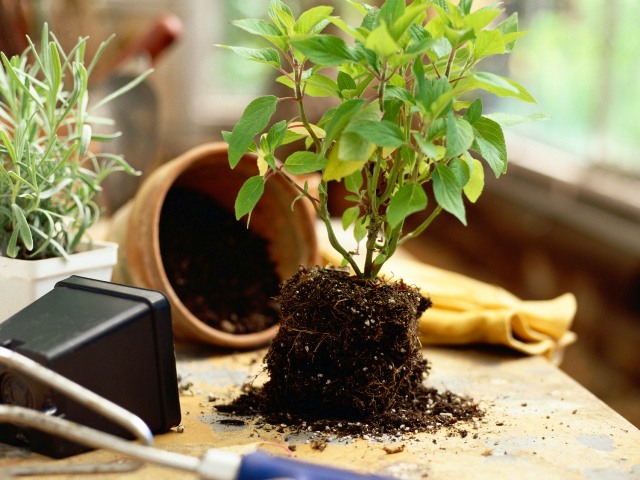
As for the plants in the country, it will also be easier for them to endure the cold later if they are planted in winter. The process of planting flowers in the fall will be easier, because the soil has warmed up enough over the summer, it is easy to dig it up, and after the first autumn rains you will not have to water the flower beds again. By the end of September, you can plant:
Planting irises in the fall has its own rules - find out about them in advance. You can also plant nasturtium, poppy in open soil. For the approach of frost, you can also do perennial plants:
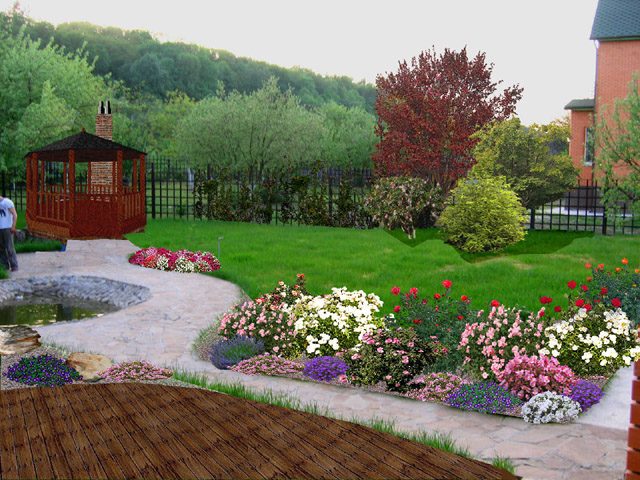
When asked if indoor flowers can be transplanted in the fall, the answer is yes, because you must definitely give the plants time to renew, so that in the spring they will delight you with their beauty and fragrance.
The plants have grown so much that the root system can be seen from the holes in the pot, then the flower simply needs a more spacious pot;
If the soil is acidic;
When replanting indoor flowers is very important, this is if you have not done this for a long time, and the plant needs a new nutrient medium in order to grow and develop better;
A transplant is also necessary for the plant that is sick or infected with parasites, then you not only transplant the flower, but also remove the dead roots and "heal" it.
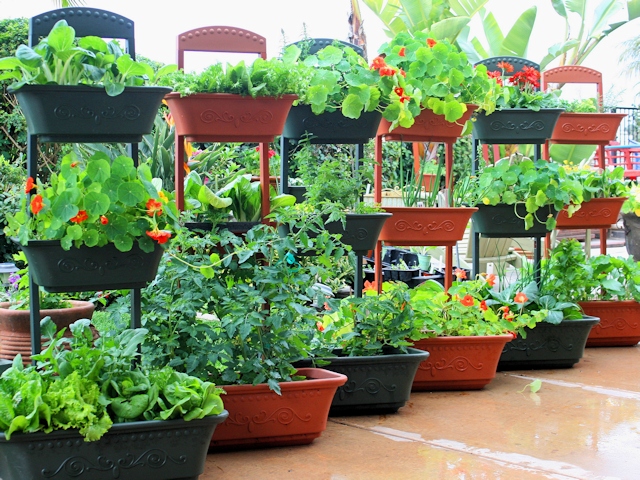
So, we found out if it is possible to transplant home flowers in the fall. Now we need to clarify the question of when indoor flowers are transplanted in the fall. It is best to do this either in the morning or in the evening, and even better - in cloudy weather. Before replanting the plant, water it well, so it will be easier for you to get it out of the pot without damaging the roots. In this case, the water should be slightly warmer than water at room temperature. If there are dead areas of the rhizome, remove them.

What flowers are transplanted in the fall in the country? Those that bloom in spring:
- ficus,
- hibiscus,
- dracaena,
- oleander,
- croton.
Now let's find out what flowers are transplanted in the fall in the country. First of all, you can transplant:
You can not only transplant irises and peonies, but separate the rhizomes of these flowers. What flowers can be transplanted in the fall at the dacha yet? Be sure to transplant:
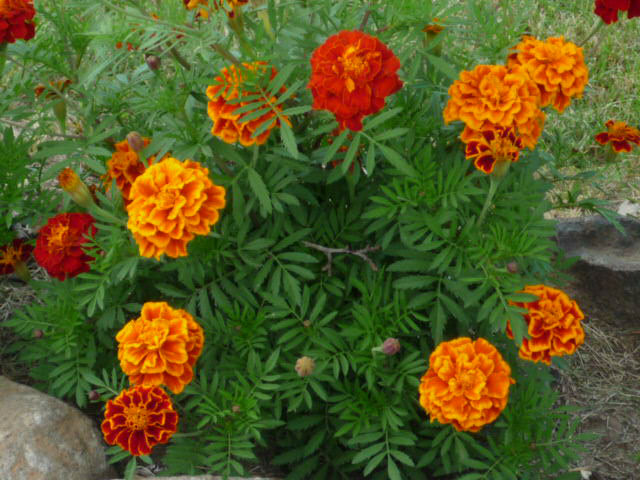
It is very easy to transplant flowers in a flowerbed in autumn; it is best to water the plant well before transplanting. Make sure that the integrity of the root system is maintained so that the plant will better take root in the new flower bed. Is it possible to transplant flowers in the fall if you are going to the country in a few days? The answer is "yes", just pre-pack the plant in a newspaper "headlong", and wrap the roots with a damp cloth so that they do not dry out. It is better to cut the flowers.
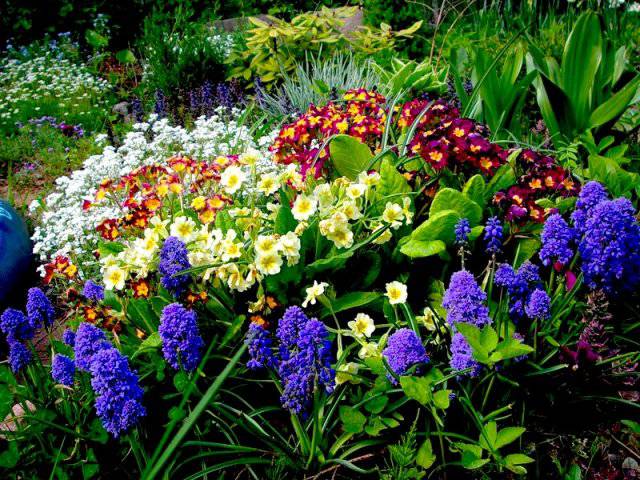
We hope you remember when to transplant flowers into pots and flower beds in the fall. You can also watch helpful Youtube videos on which flowers can be replanted in the fall to keep your plot the most beautiful!
Possible mistakes
1. Unsuitable soil in terms of composition and acidity.
2. The size of the pot does not correspond to the volume of the root system.
3. Planting / transplanting a plant at the wrong time for him.
As you can see, planting a houseplant in a new pot is pretty easy! You just need to know the main points of the correct choice of soil, capacity for planting, technology and choose the right time for transplanting.
Growing flowers at home is not the most difficult task. However, some plants always feel great, while others have to throw another green pet that died after an unsuccessful transplant into the trash bin. So that after this procedure the plants do not die and bloom, it is necessary to follow the technology, take into account the peculiarities of soils, pots and avoid common mistakes.
You can plant not only indoor plants in pots, but also outdoor plants. In the latter case, containers are installed on loggias, balconies, terraces, in summer cottages and flower beds. Roses, tuberous begonias, petunias and viols grow well in pots. These colors require not only a lot of light, but also fresh air, which is usually not enough in the apartment.
If you plan to grow a plant in the house, then you need to pay attention to which side the windows face. In the north, unpretentious species are grown, such as cacti and succulents.
It is better to use the southern window only in winter, placing pots with heat-loving and light-loving subtropical plants on it.It's too hot on this side in summer for any flowers other than cacti.

The best options for potted plants are west and east windows.
Potted flowers can be planted at any time of the year. The best time to divide and transplant most plants is in early spring.
A novice florist who decides to transplant his plants does not have to make his own soil mixture. Soil preparation is a rather difficult task that can only be solved by experienced specialists.
In the retail network, you can now find ready-made soil mixtures for almost any indoor and outdoor plants. They are inexpensive and are quite suitable for the amateur growing of home flowers. The most unpretentious ones can be planted even in universal and seedling soils.
Store mixes are usually already disinfected. They do not need to be watered with potassium permanganate, heated or otherwise freed from parasites and sources of infection: bacteria and spores of microscopic fungi. Also, you do not need to add fertilizers to them.
The trade network contains many pots and pots for indoor and outdoor plants.
If you do not take into account the exclusive vessels made of materials atypical for growing (metal, wood, stone), then it remains to choose between plastic and ceramics.
Plastic pots are inexpensive and lightweight. Growing indoor krupnomers - dracaena, ficus, zamioculcas, dieffenbachia - have to reckon with their size and weight. Therefore, for large indoor plants, it is better to purchase light plastic containers that can be moved around while caring for green pets. Sturdy pots made from this material are indispensable for creating vertical compositions.
Such vessels are not used when growing very tall plants, as they can tip over in a light container. An important disadvantage of plastic is that the material does not breathe, and the lack of air has a bad effect on the development of roots.
Conditions of detention
Indoor plants need to provide optimal living conditions. Let's consider in detail what the florist should take care of.
Location and lighting
Many indoor plants need adequate lighting. Typically, daylight hours should be between 12 and 16 hours per day. At times when the plant is dormant, this time frame can be shortened. Since climatic conditions in our country are not always favorable, people often have to resort to auxiliary lighting (special lamps are suitable). This is especially true for thermophilic tropical flowers that prefer to grow on the sunny side.
It is not recommended to expose indoor plants on a windowsill in the most direct rays of the sun. In such conditions, green pets risk getting burns. The sun should not be abundant. Diffused light or light partial shade is ideal - it all depends on the preferences of a particular type of plant. It should be borne in mind that with insufficient lighting, the processes of photosynthesis will inevitably slow down. This will negatively affect the health of the flower.
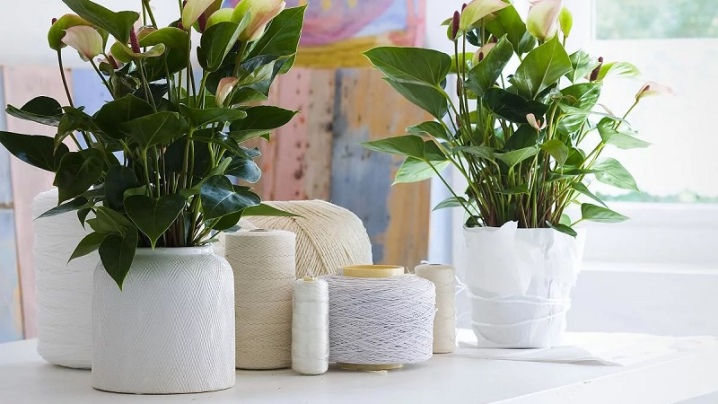
Temperature
At home, thermophilic plants are most often grown that cannot survive on the street. Such plantings need a warm, room temperature in the room where they grow. Optimum performance ranges from +16 to +22 degrees Celsius.
Even tropical species of indoor plants “don't like” excessive heat. Do not try to create a jungle-like environment in your home. Rare indoor flowers will "like" temperature indicators exceeding +24 degrees. And there are also such crops that grow better in an environment of light coolness (for example, at a temperature of +15 degrees Celsius).
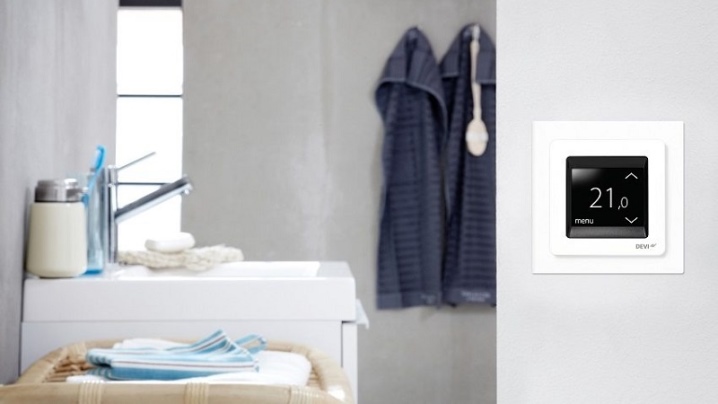
Humidity
The main percentage of indoor plants belongs to the moisture-loving category. The humidity level should be slightly above average.At the same time, one should not forget about the direct origin of home flowers - most of them come from the humid tropics. High humidity indicators have a beneficial effect not only on the condition of plants, but also on people.
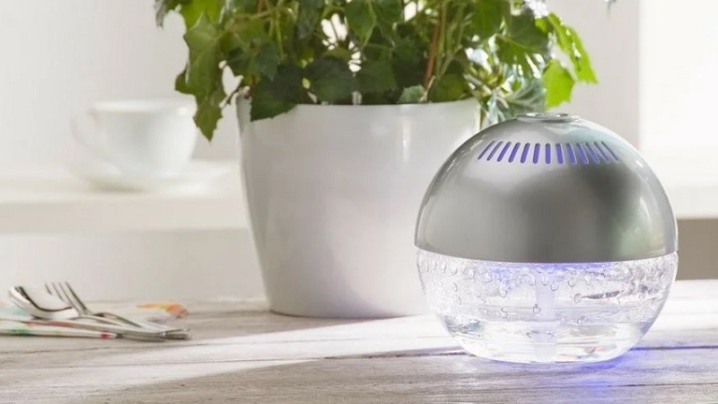
The soil
It is important to take care of using a quality primer for flowers. Houseplants have nowhere else to take nutrients, except from the soil mixture.
The soil should contain not only all the necessary nutrients. The land must also have a suitable structure. It should not be overly loose or overly dense. It is important to take care of the drainage layer in the plant pot. A drainage layer is needed for almost all household flowers.
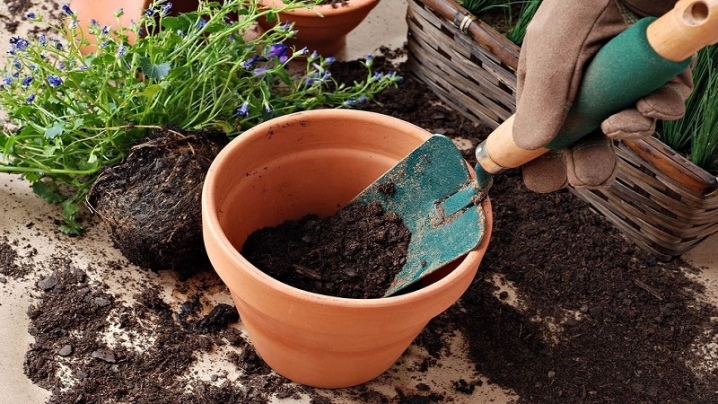
Pot
Modern growers can independently choose in which tank to grow indoor plants. On sale there are a lot of suitable containers made of different materials: pots, flowerpots, boxes. All flower dishes are divided into 2 types:
- for growing - there are already drainage holes in such pots;
- for decoration - pots are meant in which there are no additional holes, so they can be placed anywhere without fear of possible leaks.


